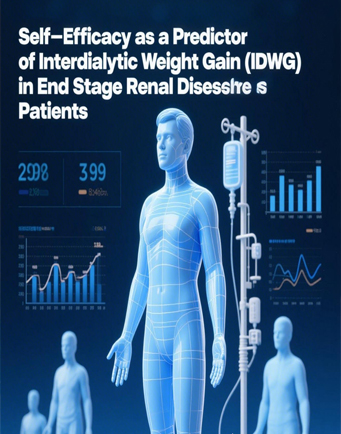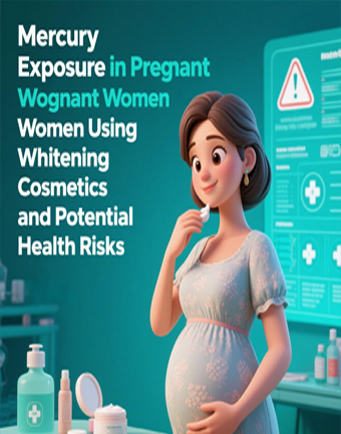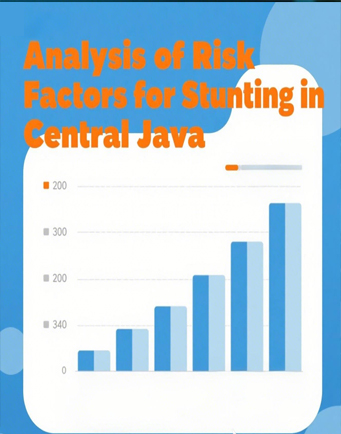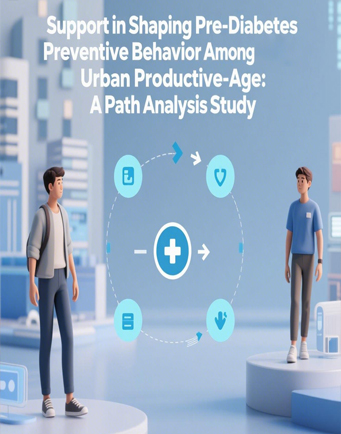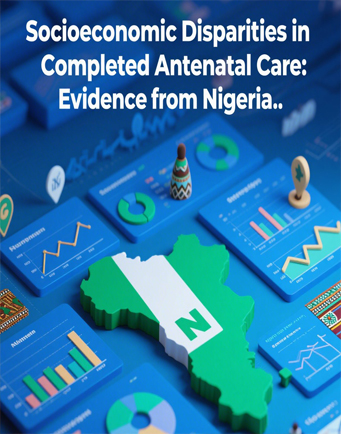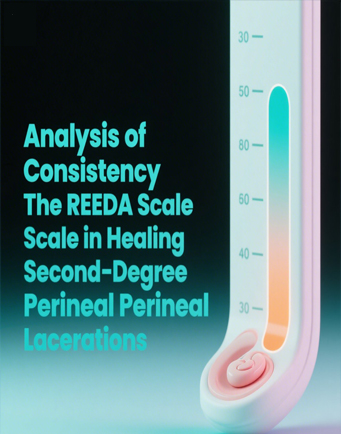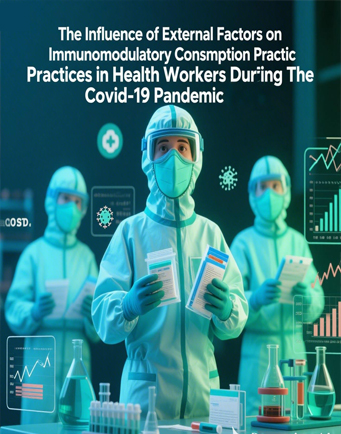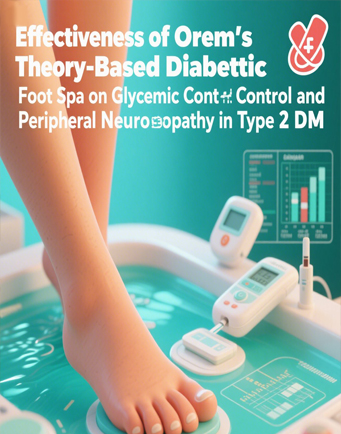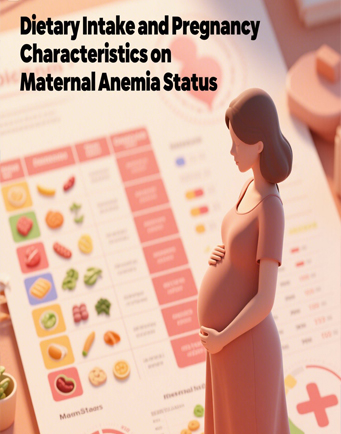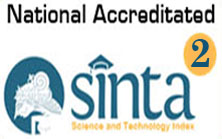The Level of Soluble FMS-Like Tyrosine Kinase 1 (sFlt-1) in the Umbilical Cord in Preeclampsia and its Correlation with Blood Pressure and Baby’s Birth Weight
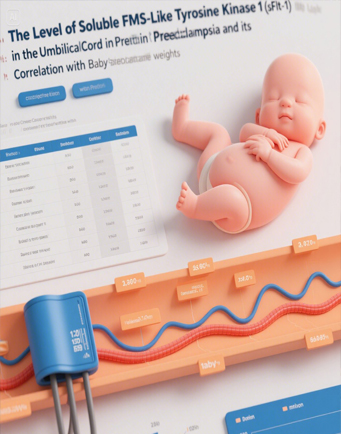
Downloads
Soluble FMS-like tyrosine kinase 1 (sFlt-1) is one of the markers that plays a role in the pathogenesis of preeclampsia. This study aimed to analyze the levels of umbilical cord sFlt-1 in relation to blood pressure and birth weight in babies on preeclamptic mothers. The study employed an analytical cross-sectional observational design. The sample size for this study consists of 33 participants. The levels of umbilical cord sFlt-1 were examined using the ELISA method. The data were analyzed using the Mann-Whitney U test to determine the differences in sFlt-1 levels, blood pressure, and birth weight. Spearman's rank correlation test was used to determine the correlation between sFlt-1 levels and blood pressure and birth weight. The sFlt-1 examination results indicated a significant difference between the preeclampsia and normal pregnancy groups. The mean sFlt-1 level in the preeclampsia group was 10.693 ng/mL (SD ±6.535 ng/mL), whereas in the normal pregnancy group, it was 3.572 ng/mL (SD ±1.225 ng/mL). This difference suggests that sFlt-1 levels are significantly higher in mothers with preeclampsia compared to those with normal pregnancies. This finding is consistent with the pathophysiology of preeclampsia, which involves endothelial dysfunction and an increase in anti-angiogenic factors such as sFlt-1.
Álvarez-Fernández, I., Prieto, B., & Álvarez, F. V. (2016). Preeclampsia. Revista del laboratorio clínico, 9(2), 81-89. https://doi.org/10.1016/j.labcli.2016.04.002
Chen, D. B., & Wang, W. (2013). Human placental microRNAs and preeclampsia. Biology of reproduction, 88(5), 130, 1-11. https://doi.org/10.1095/biolreprod.113.107805
Chen, X. K., Wen, S. W., Bottomley, J., Smith, G. N., Leader, A., & Walker, M. C. (2009). In vitro fertilization is associated with an increased risk for preeclampsia. Hypertension in pregnancy, 28(1), 1-12. https://doi.org/10.1080/10641950802001859
Helmo, F. R., Lopes, A. M. M., Carneiro, A. C. D. M., Campos, C. G., Silva, P. B., dos Reis Monteiro, M. L. G., ... & Corrêa, R. R. M. (2018). Angiogenic and antiangiogenic factors in preeclampsia. Pathology-Research and Practice, 214(1), 7-14. https://doi.org/10.1016/j.prp.2017.10.021
Kajdy, A., Feduniw, S., Ajdacka, U., Modzelewski, J., Baranowska, B., Sys, D., ... & Poon, L. C. (2020). Risk factors for anxiety and depression among pregnant women during the COVID-19 pandemic: A web-based cross-sectional survey. Medicine, 99(30), e21279. https://doi.org/10.1097/MD.0000000000021279
Karumanchi, S. A. (2016). Angiogenic factors in preeclampsia: from diagnosis to therapy. Hypertension, 67(6), 1072-1079. https://doi.org/10.1161/HYPERTENSIONAHA.116.06421
Krishnaveni, K., Thankachan, B. M., Sivakumar, A. M., Nair, A. B., Sundaram, S. R., & Sambathkumar, R. (2018). A Review On The Evaluation And Management Of Menorrhagia. Research Journal of Pharmaceutical Biological and Chemical Sciences, 9(4), 1014-1021.
Lam, C., Lim, K. H., & Karumanchi, S. A. (2005). Circulating angiogenic factors in the pathogenesis and prediction of preeclampsia. Hypertension, 46(5), 1077-1085. https://doi.org/10.1161/01.HYP.0000187899.34379.b0
Levine, R. J., Qian, C., Maynard, S. E., Yu, K. F., Epstein, F. H., & Karumanchi, S. A. (2006). Serum sFlt1 concentration during preeclampsia and mid trimester blood pressure in healthy nulliparous women. American journal of obstetrics and gynecology, 194(4), 1034-1041. https://doi.org/10.1016/j.ajog.2005.10.192
Lindheimer, M. D., Taler, S. J., & Cunningham, F. G. (2008). Hypertension in pregnancy. Journal of the American Society of Hypertension, 2(6), 484–494. https://doi.org/10.1016/j.jash.2008.10.001
Maynard, S. E., & Karumanchi, S. A. (2011). Angiogenic Factors and Preeclampsia. Seminars in Nephrology, 31(1), 33–46. https://doi.org/10.1016/j.semnephrol.2010.10.004
Moore, A. G., Young, H., Keller, J. M., Ojo, L. R., Yan, J., Simas, T. A. M., & Maynard, S. E. (2012). Angiogenic biomarkers for prediction of maternal and neonatal complications in suspected preeclampsia. The Journal of Maternal-Fetal & Neonatal Medicine, 25(12), 2651–2657. https://doi.org/10.3109/14767058.2012.713055
Prathima, P., & Anuchitra, S. (2015). Correlation Between BMI and Pregnancy Outcome Among Postnatal Mothers With Pregnancy Induced Hypertension in Selected Hospitals Bangalore. Journal of Health and Allied Sciences NU, 5(01), 062-067. https://doi.org/10.1055/s-0040-1709751
Perkumpulan Obstetri dan Ginekologi Indonesia. (2016). Pedoman Nasional Pelayanan Kedokteran Diagnosis dan Tatalaksana Preeklampsia. Jakarta: Perkumpulan Obstetri dan Ginekologi Indonesia.
Poon, L. C., & Nicolaides, K. H. (2014). Early prediction of preeclampsia. Obstetrics and gynecology international, 2014(297397), 1-11. https://doi.org/10.1155/2014/297397
Prawirohardjo, S. (2014). Ilmu Kebidanan Edisi Keempat. Jakarta: PT. Bina Pustaka Sarwono Prawirohardjo.
Rahmi, L., Herman, R. B., & Yusrawati, Y. (2016). Perbedaan rerata kadar soluble Fms-like tyrosine kinase-1 (Sflt-1) serum pada penderita early onset, late onset preeklampsia berat/eklampsia dan kehamilan normal. Jurnal Kesehatan Andalas, 5(1), 41–48. https://doi.org/10.25077/jka.v5i1.440
Rana, S., Lemoine, E., Granger, J. P., & Karumanchi, S. A. (2019). Preeclampsia: pathophysiology, challenges, and perspectives. Circulation research, 124(7), 1094-1112. https://doi.org/10.1161/CIRCRESAHA.118.313276
Roberts, J. M., & Escudero, C. (2012). The placenta in preeclampsia. Pregnancy Hypertension: An International Journal of Women's Cardiovascular Health, 2(2), 72-83. https://doi.org/10.1016/j.preghy.2012.01.001
Sabrin, G., Sunardi, W., & Noviyanti, N. I. (2020). Hubungan Kadar Soluble FMS-Like Tyrosine Kinase 1 (sFlt-1) Ibu Preeklampsia Dengan Berat Badan Lahir Bayi. Journal of Issues in Midwifery, 4(2), 91-100. https://doi.org/10.21776/ub.joim.2020.004.02.5
Seyom, E., Abera, M., Tesfaye, M., & Fentahun, N. (2015). Maternal and fetal outcome of pregnancy related hypertension in Mettu Karl Referral Hospital, Ethiopia. Journal of ovarian research, 8, 1-7. https://doi.org/10.1186/s13048-015-0135-5
Sibai, B. M. (2006). Preeclampsia as a cause of preterm and late preterm (near-term) births. Seminars in Perinatology, 30(1), 16–19. https://doi.org/10.1053/j.semperi.2006.01.008
Sirait, R. H. (2024). Anesthesia Management in an Eclampsia Patient. International Blood Research & Reviews, 15(3), 29-38. https://doi.org/10.9734/ibrr/2024/v15i3342
Sivakumar, S., Vishnu Bhat, B., & Badhe, B. A. (2007). Effect of pregnancy induced hypertension on mothers and their babies. Indian Journal of Pediatrics, 74(7), 623–625. https://doi.org/10.1007/s12098-007-0110-2
Sudarman, S., Aswadi, A., Syamsul, M., & Gabut, M. (2021). Faktor Yang Berhubungan Dengan Kejadian Stunting Pada Balita di Wilayah Kerja Puskesmas Pannambungan Kota Makassar. Al Gizzai: Public Health Nutrition, 1(1), 1-15. https://doi.org/10.24252/algizzai.v1i1.19078
Tendean, H. M., & Wagey, F. W. (2021). Faktor-Faktor yang Berhubungan dengan Terjadinya Preeklampsia. e-CliniC, 9(1), 68-80. https://doi.org/10.35790/ecl.v9i1.31960
Tsao, P. N., Wei, S. C., Su, Y. N., Chou, H. C., Chen, C. Y., & Hsieh, W. S. (2005). Excess soluble fms-like tyrosine kinase 1 and low platelet counts in premature neonates of preeclamptic mothers. Pediatrics, 116(2), 468-472. https://doi.org/10.1542/peds.2004-2240
Wahida, W., & Gusriani, G. (2023). Relationship between Soluble Fms-Like Tyrosine Kinase-1 (Sflt-1) Levels in Preeclamptic Mothers with Asphyxia. Majalah Kesehatan Indonesia, 4(1), 49-54. https://doi.org/10.47679/makein.2023141
World Health Organization. (2015). Maternal Health. World Health Organization. Retrieved from: https://www.afro.who.int/health-topics/maternal-health#:~:text=About%20830%20women%20die%20from,most%20could%20have%20been%20prevented
Xiao, J., Shen, F., Xue, Q., Chen, G., Zeng, K., Stone, P., ... & Chen, Q. (2014). Is ethnicity a risk factor for developing preeclampsia? An analysis of the prevalence of preeclampsia in China. Journal of human hypertension, 28(11), 694-698. https://doi.org/10.1038/jhh.2013.148
Zhao, W., Qiao, J., Zhang, Q., Zhao, Y., & Chen, Q. (2010). Levels of antiangiogenic factors in preeclamptic pregnancies. Growth Factors, 28(4), 293–298. https://doi.org/10.3109/08977191003662651
Copyright (c) 2025 JURNAL INFO KESEHATAN

This work is licensed under a Creative Commons Attribution-NonCommercial-ShareAlike 4.0 International License.
Copyright notice
Ownership of copyright
The copyright in this website and the material on this website (including without limitation the text, computer code, artwork, photographs, images, music, audio material, video material and audio-visual material on this website) is owned by JURNAL INFO KESEHATAN and its licensors.
Copyright license
JURNAL INFO KESEHATAN grants to you a worldwide non-exclusive royalty-free revocable license to:
- view this website and the material on this website on a computer or mobile device via a web browser;
- copy and store this website and the material on this website in your web browser cache memory; and
- print pages from this website for your use.
- All articles published by JURNAL INFO KESEHATAN are licensed under the Creative Commons Attribution 4.0 International License. This permits anyone to copy, redistribute, remix, transmit and adapt the work provided the original work and source is appropriately cited.
JURNAL INFO KESEHATAN does not grant you any other rights in relation to this website or the material on this website. In other words, all other rights are reserved.
For the avoidance of doubt, you must not adapt, edit, change, transform, publish, republish, distribute, redistribute, broadcast, rebroadcast or show or play in public this website or the material on this website (in any form or media) without appropriately and conspicuously citing the original work and source or JURNAL INFO KESEHATAN prior written permission.
Permissions
You may request permission to use the copyright materials on this website by writing to jurnalinfokesehatan@gmail.com.
Enforcement of copyright
JURNAL INFO KESEHATAN takes the protection of its copyright very seriously.
If JURNAL INFO KESEHATAN discovers that you have used its copyright materials in contravention of the license above, JURNAL INFO KESEHATAN may bring legal proceedings against you seeking monetary damages and an injunction to stop you using those materials. You could also be ordered to pay legal costs.
If you become aware of any use of JURNAL INFO KESEHATAN copyright materials that contravenes or may contravene the license above, please report this by email to jurnalinfokesehatan@gmail.com
Infringing material
If you become aware of any material on the website that you believe infringes your or any other person's copyright, please report this by email to jurnalinfokesehatan@gmail.com.


